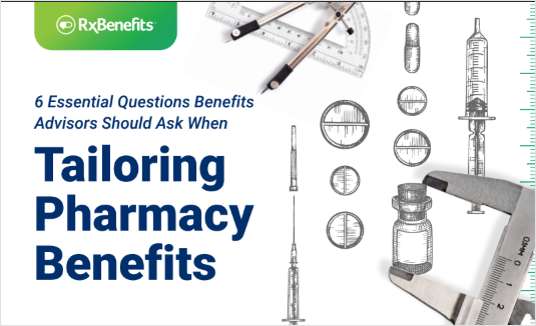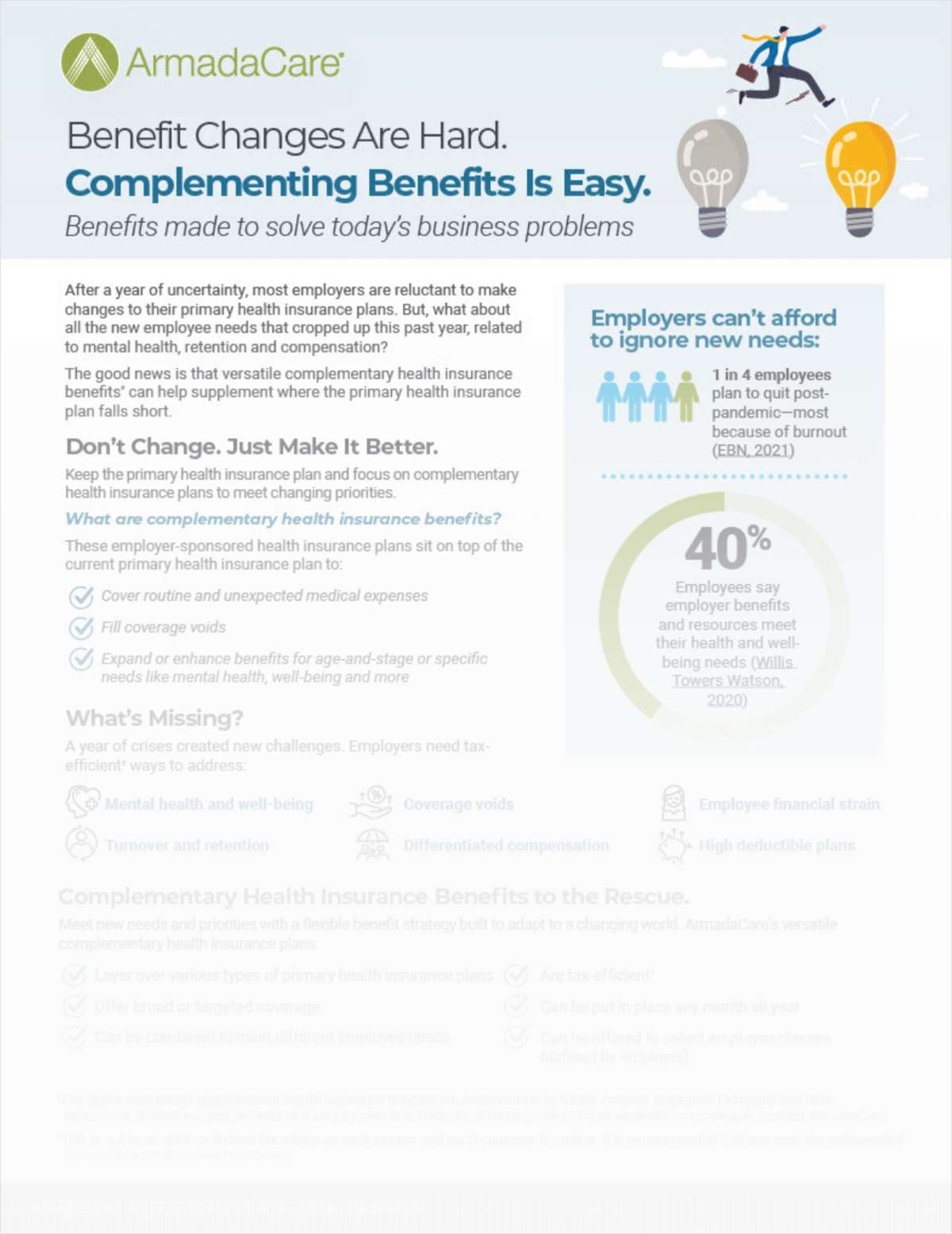Few will be surprised to hear that voluntary market sales are on the rise.
In April, LIMRA’s review of 46 voluntary insurance product providers showed sales increases for the fifth straight year. Half the companies surveyed said sales rose by 12 percent or more.
In part, the brisk pace of voluntary sales tells the story of the United States’ post-ACA group health landscape.
But peel back a few layers, and the numbers show something else: As more cost-conscious employers welcome voluntary products into their benefits packages, group plan participation overall remains stagnant.
In 2010, LIMRA’s data showed that voluntary benefit participation rates increased in 27 percent of the groups surveyed. Four years later, it had increased in 30 percent — relatively flat given the overall uptick in voluntary sales. And 9 percent of firms actually reported less participation. This is gathered in the association’s “2015 Keeping up with the Times Study.”
The report’s three-year projection shows that 27 percent of firms can expect higher enrollment numbers, while 11 percent may see less participation.
So does this mean that the voluntary market has reached a saturation tipping point?
Absolutely not, says Nick Rockwell, a senior consultant at Connecticut-based Eastbridge Consulting Group Inc. In fact, Eastbridge’s 2015 U.S. Voluntary/Worksite Sales Report shows sales topping the $7 billion mark for the first time in 2015 -- a 3.6 percent increase over 2014. But, he adds, the numbers do suggest that brokers will have to change their marketing strategies to win new business.
Eastbridge hired Rockwell, who previously ran LifeLock’s benefits solutions group, at the beginning of 2016 to help voluntary providers and new market entrants develop and implement more effective worksite enrollment strategies.
Seven years ago, most independent group brokers eschewed the voluntary market. But as the ACA began to encourage more health care consumerism, traditional brokers were forced to adapt – and quickly – to stay viable.
As a result, 60 percent of voluntary products today are sold by traditional group health brokers. “Growth in voluntary sales in the next five years is not going to come from more brokers entering the space—most already offer the products,” says Rockwell.
Instead, it will be enrollment expertise that moves the penetration needle.
As they entered the voluntary market, traditional brokers brought traditional marketing strategies. Chief among these tactics is the so-called “takeover market” -- brokers approach sponsors, offer to take a plan to market, and then attempt to win the business on price alone, Rockwell explains.
In a commoditized benefits world, that strategy can work. But as the health care market evolves and a growing number of voluntary options emerge along with the need for more nuanced benefit design, the takeover approach has failed to move the enrollment needle. That, in turn, explains the lackluster participation rates, says Rockwell.
“When a broker competes to take over a group’s voluntary business, the enrollment, in many cases, has already occurred,” says Rockwell. “So competing for that business did not necessarily require a high level of enrollment sophistication. In effect, taking over a group’s voluntary business involved a conversation with only the employer, and not the employees.”
To grow voluntary business in the future, then, brokers will need to revise their approach.
“Executing a sophisticated and efficient voluntary enrollment program is not an easy thing to do,” says Rockwell. “Ultimately, voluntary benefits are not bought, necessarily; they are sold. That makes for a very different proposition from the marketing of traditional group benefits.”
From Rockwell’s perspective, brokers will have to become students of enrollment efficiency. In order to grow and keep business, in other words, they’ll need to improve their ability to engage participants and maximize enrollment.
A product-by-product breakdown shows that voluntary enrollment largely varies by group size.
LIMRA’s data shows that vision insurance plans with 10 to 99 participants experienced 19 percent uptick, compared with 35 percent in plans with 100 to 999 participants.
Life insurance participation was only 17 percent in the small plan market, compared with 48 percent in plans with more than 1,000 participants.
Even for voluntary dental, which experienced the highest penetration rates among all plan sizes, total participation was only 24 percent, according to last year’s numbers.
It stands to reason that larger plans have greater resources and time to invest in technology that delivers comprehensive benefits information, resulting in higher participation rates than smaller plans.
That said, the emergence of tech-based solutions should help brokers deliver efficiencies to small plans, says Rockwell.
“What’s worth doing is worth doing right,” he says. “Employees are paying more for their benefits and they want more choice — that much is clear. But without the education needed for them to understand all of their voluntary options, they will not buy.”
One recent study from Transamerica shows that 47 percent of employees have not been offered a new voluntary product since 2010, when ACA was first passed. And now that small groups are required to comply, there’s an even greater opportunity for brokers to develop new markets: Ninety-eight percent of the country’s employers have fewer than 100 workers, accounting for 35 percent of the labor force, according to the U.S. Census Bureau.
“We are definitely seeing signs that traditional brokers are getting better with their enrollment strategies, but their evolution into the voluntary market is still early,” notes Rockwell. “The key will be delivering education to participants. When brokers get that, we’ll see participation rates on the rise.”
Complete your profile to continue reading and get FREE access to BenefitsPRO, part of your ALM digital membership.
Your access to unlimited BenefitsPRO content isn’t changing.
Once you are an ALM digital member, you’ll receive:
- Breaking benefits news and analysis, on-site and via our newsletters and custom alerts
- Educational webcasts, white papers, and ebooks from industry thought leaders
- Critical converage of the property casualty insurance and financial advisory markets on our other ALM sites, PropertyCasualty360 and ThinkAdvisor
Already have an account? Sign In Now
© 2024 ALM Global, LLC, All Rights Reserved. Request academic re-use from www.copyright.com. All other uses, submit a request to [email protected]. For more information visit Asset & Logo Licensing.








